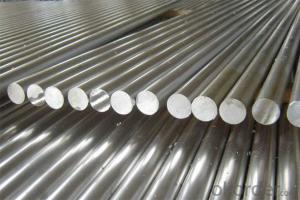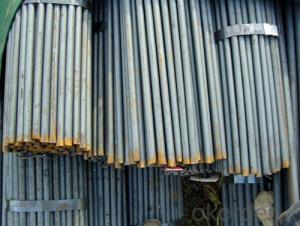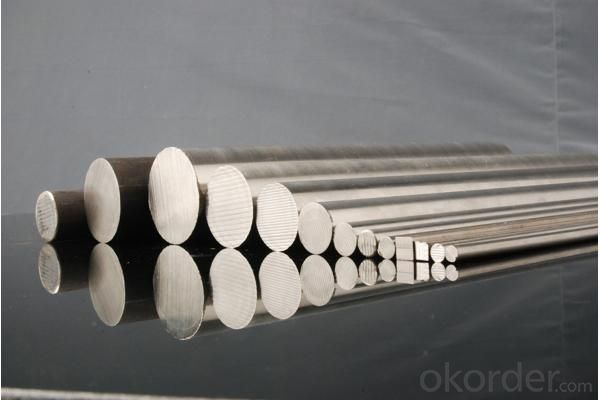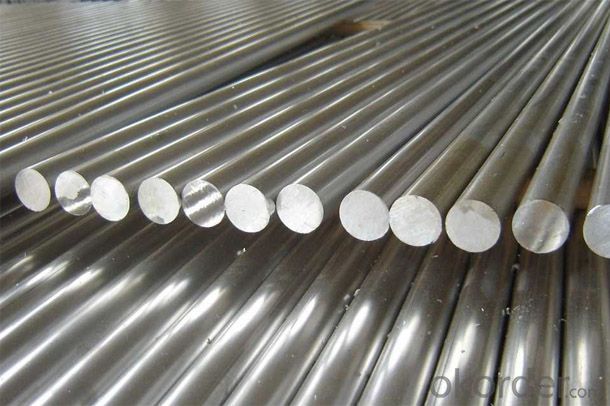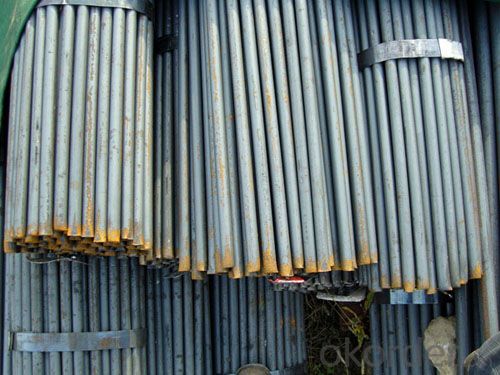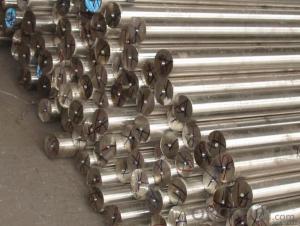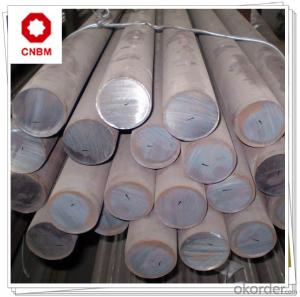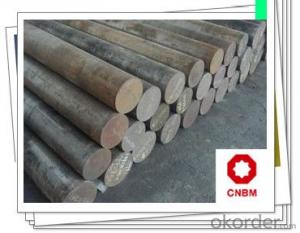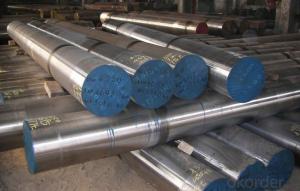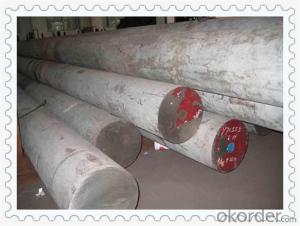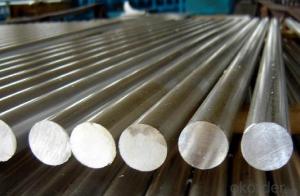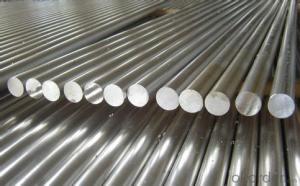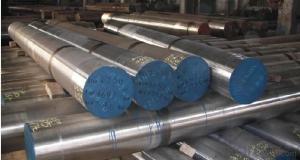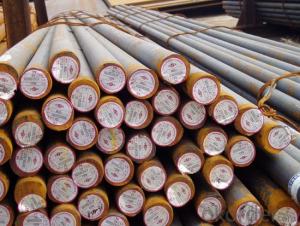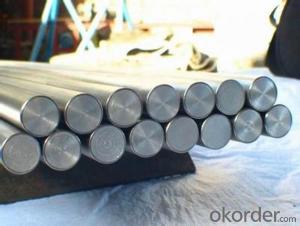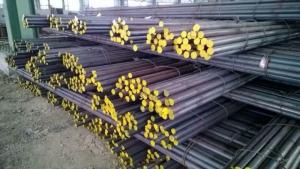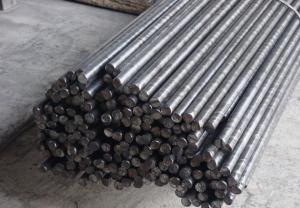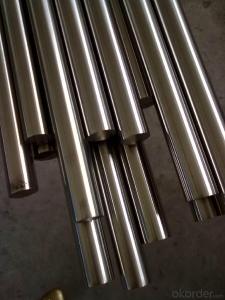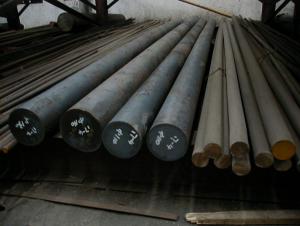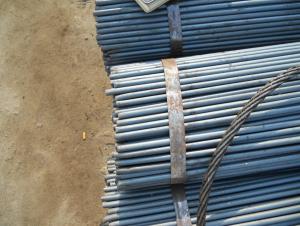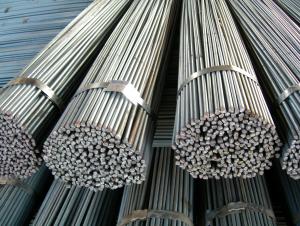Environmental High Quality 304 Stainless Steel Round Bar
- Loading Port:
- Tianjin
- Payment Terms:
- TT OR LC
- Min Order Qty:
- 25 m.t.
- Supply Capability:
- 20000 m.t./month
OKorder Service Pledge
Quality Product, Order Online Tracking, Timely Delivery
OKorder Financial Service
Credit Rating, Credit Services, Credit Purchasing
You Might Also Like
Specifications
Stainless Steel Bar
1.Cold roll cold draw pipe&tube
2.Grade: TP304,TP316L
3.Honor: CE/PED,AB
4.STANDARD: ASTM 312/213/269
Environmental High Quality 304 Stainless Steel Round Bar
Description:
| Series | Top Quility steel Rod |
| Grade | 300 series(304, 304 L,304H,310,310S,316, 316 L,317L,321etc.) |
| Technics | Hot-rolled, Hot-forged, Cold-drawn, Centerless Gringing |
| Surface | Peeled, Bright, Polish |
| Diamete Rang | Peeled bright round bar: 3-400mm |
| Hot-rolled bar: 3-130mm | |
| Hot- forged bar: 130-400mm | |
| Cold-drawn: 3-40mm | |
| Centerless grinding bright round bar: 3-100mm | |
| Dia torlarance:H9-K12 | |
| Length | Radom length, Specified length, Multiple length ( no more than 9m) |
| Usage | These products are widely supplied to areas of machine-made industry, chemical industry, |
| shipping industry, rchitecture, food industry, household products etc | |
| Packaging | Standard export packing, according to customer's requirment |
| Delivery Time | up to the order quantity |
| Certification | CE/PED,ABS, DNV ,GL,LR |
| Application | Pipe and Tubes for petrochemical industry,pharmaceutical industry ,food industry, |
| aviation and aerospace industry,architectural decoration industry |
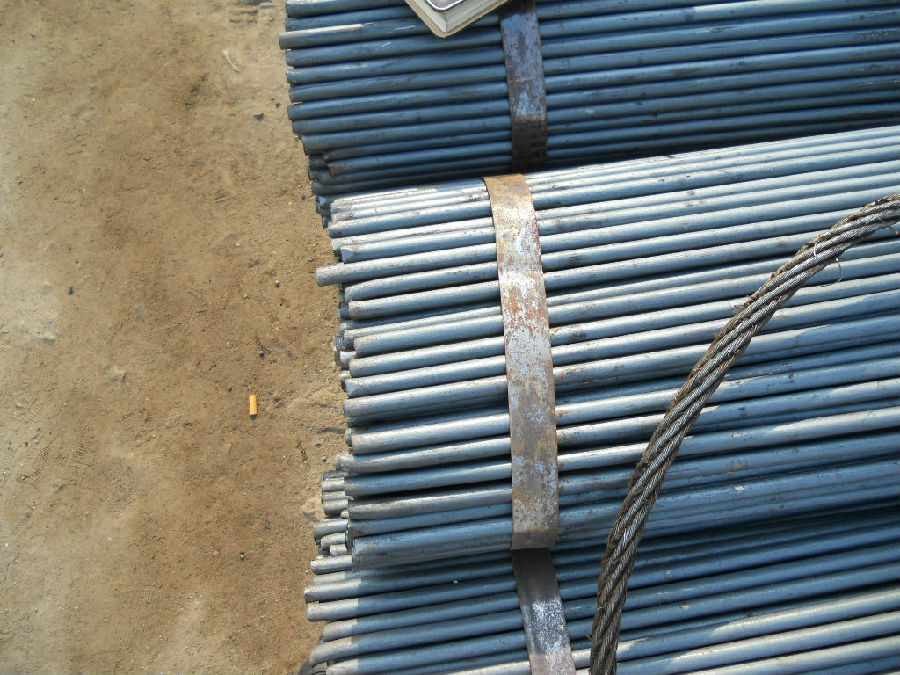
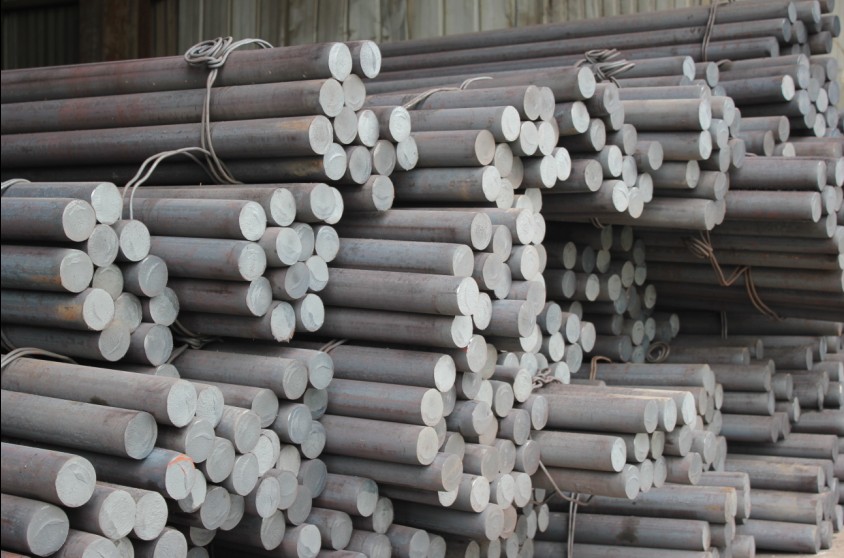
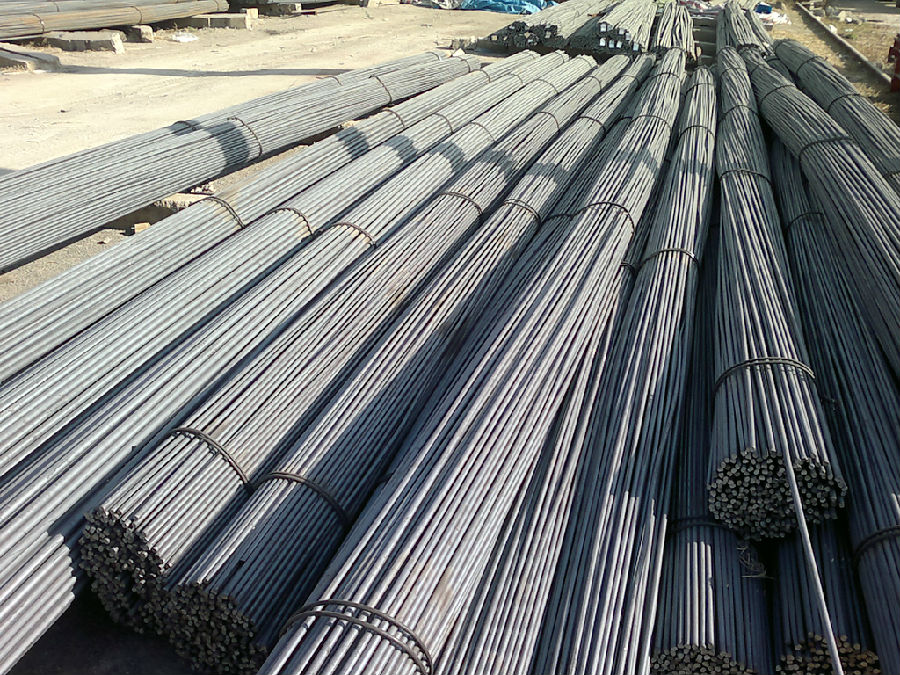
- Q: Round bar, flat steel, not reinforced
- All belong to section steel. Round steel can be used as reinforcing steel, which is often referred to as light round bar and primary steel. Flat steel is finished steel, not steel.
- Q: What is the thermal conductivity of a steel round bar?
- The thermal conductivity of a steel round bar may differ based on the particular steel type and composition. In general, carbon steel exhibits a thermal conductivity range of 26 to 48 W/m·K, whereas stainless steel typically has a slightly lower thermal conductivity of 15 to 27 W/m·K. Nevertheless, these values are only approximations and can be influenced by factors including temperature, impurities, and alloying elements. It is worth noting that thermal conductivity describes a material's capacity to conduct heat and is commonly measured in units of W/m·K.
- Q: What are the different types of steel round bar surface treatments used in the aerospace industry?
- In the aerospace industry, the different types of steel round bar surface treatments commonly used include various coatings such as nickel plating, chrome plating, zinc plating, and anodizing. These treatments are applied to enhance the corrosion resistance, improve the durability, and provide a visually appealing finish to the steel round bars used in aerospace applications.
- Q: What is the difference between a seamless and a turned steel round bar?
- A seamless steel round bar is produced by piercing a solid billet to create a hollow tube, which is then elongated and rolled to the desired size. This manufacturing method ensures a smooth and continuous surface, without any seams or welds. On the other hand, a turned steel round bar is a solid bar that undergoes machining operations to achieve the desired shape and dimensions. It is typically produced from a larger steel bar by removing material through turning or machining processes. Therefore, the main difference lies in the manufacturing process, with seamless round bars being hollow and formed through extrusion, while turned round bars are solid and shaped through machining operations.
- Q: How do steel round bars compare to plastic round bars?
- Steel round bars and plastic round bars have several key differences that affect their performance and suitability for different applications. Strength and durability: Steel round bars are known for their exceptional strength and durability, making them ideal for applications requiring high load-bearing capacity. They can withstand heavy loads and resist deformation or breakage. On the other hand, plastic round bars are generally less strong and durable, making them more suitable for lighter applications where strength is not a primary concern. Weight: Steel round bars are significantly heavier than plastic round bars due to the difference in material density. This can be an advantage in some applications where additional weight is desired for stability or balance. Plastic round bars, on the other hand, are lighter and can be advantageous in applications where weight reduction is important, such as in aerospace or automotive industries. Corrosion resistance: Steel round bars are known for their excellent corrosion resistance, particularly when they are made from stainless steel. This makes them suitable for applications in harsh environments or exposed to moisture. Plastic round bars, however, are generally more susceptible to degradation due to exposure to UV radiation, chemicals, or extreme temperatures. Therefore, they may not be as suitable for outdoor or corrosive environments. Versatility: Steel round bars offer a wide range of options in terms of size, shape, and grade. They can be machined, welded, bent, or shaped to suit various applications. Plastic round bars also come in different shapes and sizes, but their versatility is somewhat limited compared to steel. They may not be as easily machined or welded, and their performance can be affected by temperature fluctuations. Cost: Steel round bars are generally more expensive than plastic round bars due to the higher cost of raw materials and manufacturing processes. Plastic round bars, on the other hand, are more affordable and can offer cost savings in certain applications. In summary, steel round bars offer superior strength, durability, and corrosion resistance, making them suitable for heavy-duty applications. Plastic round bars are lighter, more affordable, and can be advantageous in applications where weight reduction is important. Ultimately, the choice between steel and plastic round bars depends on the specific requirements of the application and the trade-offs between strength, weight, cost, and corrosion resistance.
- Q: How do you calculate the maximum allowable stress for a steel round bar?
- To calculate the maximum allowable stress for a steel round bar, you need to determine the material's yield strength and apply a safety factor. The formula is: Maximum Allowable Stress = Yield Strength / Safety Factor. The safety factor typically depends on the application and industry standards.
- Q: Are steel round bars resistant to UV radiation?
- Steel round bars are not typically resistant to UV radiation. UV radiation can cause steel to undergo a process known as oxidation, which results in the formation of rust. This can weaken the structural integrity of the steel and potentially cause it to deteriorate over time. To protect steel round bars from UV radiation, they can be coated with a protective layer, such as paint or a specialized coating, that acts as a barrier against UV rays. Additionally, storing steel round bars in a shaded area or using a cover can help minimize their exposure to UV radiation and extend their lifespan.
- Q: What are the limitations of steel round bars?
- There are several limitations associated with steel round bars, which are important to consider when selecting the appropriate material for a particular application. 1. Weight: Steel round bars can be quite heavy, especially in larger diameters. This can pose challenges when it comes to transportation and installation, particularly in situations where weight restrictions are a concern. 2. Corrosion: While steel is generally known for its strength and durability, it is susceptible to corrosion. When exposed to moisture or certain chemicals, steel round bars can rust and deteriorate over time. This limitation can be mitigated through the use of protective coatings or by opting for stainless steel round bars, which are more resistant to corrosion. 3. Machinability: Steel round bars can be difficult to machine due to their high hardness and strength. This can result in increased tool wear and reduced cutting speeds, leading to higher production costs and longer machining times. 4. Cost: Steel round bars, particularly those made from high-quality alloys, can be relatively expensive compared to other materials. This cost factor may limit their use in certain applications where budget constraints are a concern. 5. Design Flexibility: Steel round bars come in standard sizes and shapes, which may restrict design flexibility in some cases. If a specific shape or size is required, additional processing steps such as cutting or forging may be necessary, adding to the overall production cost. 6. Fatigue Strength: Although steel round bars have excellent strength properties, they can be prone to fatigue failure when subjected to repeated or cyclic loading. This limitation is particularly relevant in applications where the material is subjected to constant stress or vibration. Despite these limitations, steel round bars remain a popular choice in various industries due to their exceptional strength, reliability, and versatility. However, it is essential to consider these factors to ensure that the chosen material meets the specific requirements of the intended application.
- Q: What is the maximum length of a steel round bar available?
- The maximum length of a steel round bar available can vary depending on various factors such as the manufacturing capabilities, transportation limitations, and customer requirements. However, in general, steel round bars can be produced in lengths ranging from a few feet to several meters. The specific maximum length will depend on the size and diameter of the round bar, as well as other logistical considerations. It is important to consult with steel suppliers or manufacturers to determine the maximum length available for a specific type and size of steel round bar.
- Q: What are the advantages of using precipitation-strengthened steel round bars?
- Using precipitation-strengthened steel round bars in various applications offers several benefits. Firstly, these bars possess improved mechanical properties, making them stronger and more durable compared to regular steel bars. Through the heat treatment process of precipitation hardening, fine particles form within the steel structure. These particles act as obstacles to dislocation movement, resulting in enhanced strength and hardness. Secondly, the increased strength of precipitation-strengthened steel round bars allows for material usage reduction while maintaining the desired level of structural integrity. This leads to cost savings in terms of raw materials and transportation, making it an economical choice in the construction and manufacturing industries. Additionally, precipitation-strengthened steel round bars exhibit excellent corrosion resistance properties. The formation of fine particles during precipitation hardening creates a dense and uniform microstructure, effectively blocking the movement of corrosive agents. This corrosion resistance makes these bars ideal for applications in harsh environments or industries where exposure to corrosive substances is common. Another advantage of using precipitation-strengthened steel round bars is their ability to withstand high temperatures. The fine particles within the steel structure contribute to improved thermal stability, enabling these bars to maintain their strength and hardness even under elevated temperatures. This makes them suitable for applications involving high-temperature operations, such as in the aerospace and automotive industries. Furthermore, precipitation-strengthened steel round bars possess superior fatigue resistance, making them advantageous in applications that require repetitive or cyclic loading. The precipitation hardening process enhances the material's resistance to fatigue failure, allowing it to withstand prolonged stress without significant deformation or failure. This makes these bars suitable for use in structures subjected to dynamic or fluctuating loads, such as bridges, cranes, and machinery components. In conclusion, precipitation-strengthened steel round bars offer enhanced mechanical properties, reduced material usage, excellent corrosion resistance, high-temperature stability, and superior fatigue resistance. These advantages make them the preferred choice for a wide range of applications, spanning from construction and manufacturing to the aerospace and automotive industries.
Send your message to us
Environmental High Quality 304 Stainless Steel Round Bar
- Loading Port:
- Tianjin
- Payment Terms:
- TT OR LC
- Min Order Qty:
- 25 m.t.
- Supply Capability:
- 20000 m.t./month
OKorder Service Pledge
Quality Product, Order Online Tracking, Timely Delivery
OKorder Financial Service
Credit Rating, Credit Services, Credit Purchasing
Similar products
Hot products
Hot Searches
Related keywords

